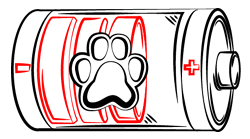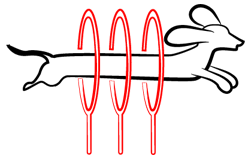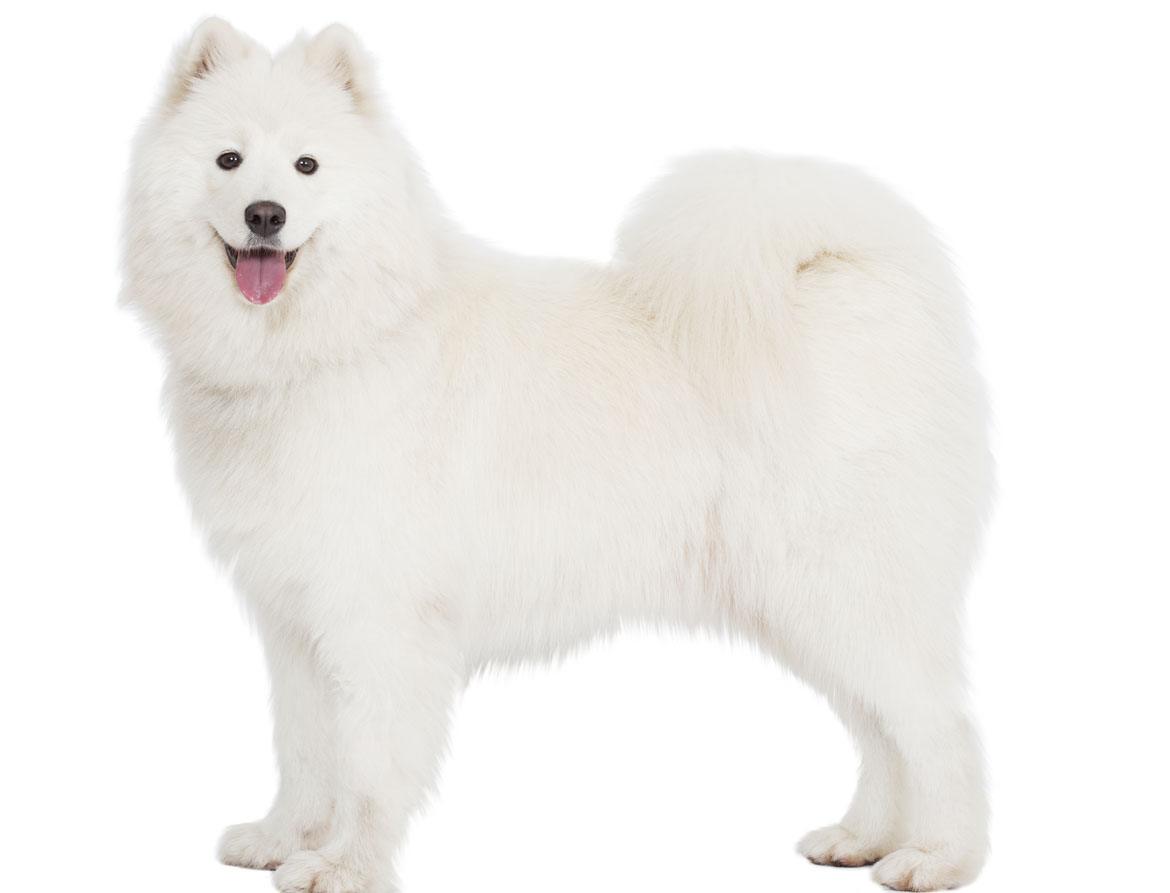
Paws ‘N’ Pups Quickview
Size
| Energy Level
| Trainability
| Paws ‘N’ Pups Rank
|
Characteristics
| Physical Characteristics: Height: 19-24” Weight: 37-72 lbs. Energy Level: Moderate – High | Colors: The American Kennel Club recognizes the Samoyed in the following colors:
The Samoyed breed does not have any AKC recognized markings. |
| Health & Longevity: 12-14 years Breeders screen for the following conditions:
Unfortunately, cancer is sometimes seen in the Samoyed breed. Also, breeders screen for Samoyed Hereditary Glomerulopathy, which is an inherited disease causing progressive kidney dysfunction, ultimately leading to kidney failure and potentially death. | |
Temperament & Train-ability
The gentle, playful Samoyed was developed in to be a versatile working dog and companion to the Samoyedic people of Siberia. One of the most ancient of breeds, this primitive dog has been living and working alongside people for 3,000 years. They hunted, herded reindeer and pulled the sledges of the nomadic people; they were part of the family, and even helped keep people warm by sleeping on them. They played with the children when there was no work to be done. The intimate bond created by working and living in such a harsh landscape forged a deep devotion to one another in both dog and human, which remains in the breed today. While dogs, as a species, are social animals, the degree of human companionship the Samoyed needs is very high. Possessing a zest for life and a keen sense of humor, the Samoyed is a joy to share life with for those ready to provide for his needs, which are substantial.
Samoyeds have high exercise and companionship needs, without which they are likely to be quite destructive and rowdy. While usually good with other animals, their high prey drive and herding instincts make them likely to chase cats and wildlife; for their safety, your Samoyed should always be leashed. This breed is not suited to apartment or condo life, those with small yards or novice dog owners. A secure yard is necessary; if they escape to wander, their hunting instincts may take over, putting them in harm’s way. They love everyone and are likely to greet a burglar with a happy bark to announce, “we have a visitor!” and then show them where the good stuff is. Working households should consider another breed, as the Samoyed will be miserable alone for long periods. Samoyeds love cold weather, but will be miserable in high heat and humidity; they must be in an air-conditioned house and only exercised in the morning and evening during high temperatures. Those living where temperatures remain high for much of the year should consider another breed.
Samoyeds make wonderful companions for active families; they generally love children. Just as your dog will need careful socialization to learn appropriate behavior around children, your children must be taught how to properly interact with your Samoyed. Never allow children to sit on, attempt to ride or pull ears, etc. Children should be taught how to recognize when a dog needs a break and give them space.
Training a Samoyed can be an interesting experience; if you value rapt obedience, this may not be the breed for you. The jobs of hunting, sledding and herding all require great thinking ability, and there will be times when your Samoyed will think their way is better. Positive reinforcement methods will motivate your Samoyed to do things your way. Samoyeds are much more emotionally sensitive than many spitz breeds, and harsh methods will chip away at their trust in you. Strong willed at times, simply remain consistent and insistent when things must be done your way, but be prepared to let some stuff go; the Samoyed sense of humor may surface when you least expect it. They are happiest when engaged in an activity that requires thinking, not route drills.
Grooming
The beautiful white coat of the Samoyed requires a lot of time and effort to keep it looking it’s best. A heavy double coat, the straight outer coat tops a dense, woolly undercoat. These dogs shed constantly, so if you’re not OK with white hair on pretty much everything, this is not the breed for you. Weekly or twice weekly brushing will keep shedding down and keep the coat mat free. Twice a year, in spring and fall, the coat will “blow”; the coat is shed out for new coat to come in, and will come off the dog in clumps. Daily brushing will be required during these times. Many owners opt to take advantage of professional grooming services to brush and bathe their Samoyed; this can be done 2-4 times a year.
Breeders caution against shaving a Samoyed; contrary to popular belief, this does not serve to make the dog cooler in hot weather, but quite the opposite. The outer coat insulates from environmental heat, so as long as the shed undercoat is removed, the dog will be more comfortable with the outer coat left on. The other issue that can develop from shaving a double-coated dog is the risk of clipper alopecia. This condition causes the hair to come back in patches – if it comes back at all. It can take a year for the coat to come back after being shaved only once, but sometimes only patches come in.
Ears should be kept clean and dry. Toenails should be trimmed; even if your Samoyed wears their nails down, you will want to maintain the ability to handle their feet, especially useful as they age, when wear to the nails typically slows down. Teeth must also be checked and cleaned regularly.
Diet
The amount of food a Samoyed will require can vary depending on age, activity level, and type of food fed; average feeding amounts will be 1 ½ – 2 ½ cups per day, fed in two meals per day, and a high quality food is recommended. Free feeding should be avoided, as some Samoyeds are prone to becoming overweight, and this puts the dog at risk of many health problems. A portion of your Samoyed’s daily food can be used when training to avoid overfeeding. A constant supply of fresh, clean water must always be available.
Looking for a Samoyed?
 Find A Samoyed Breeder |  Samoyed Puppies For Sale |  Adopt A Samoyed |
Cost
Prices for Samoyeds vary widely, averaging $600-$1,500, but often going up to as high as $2,500. Breed rescue organizations are another option, where lovely dogs needing a home can be found; adoption fees vary widely, but are generally in the $200-$500 range. Whether you acquire a dog from a breeder or rescue, do your homework to be assured that the temperaments of the dogs are tested and sound. Ongoing expenditures include the typical supplies, food, and regular vet visits.
Paws ‘N’ Pups Ranking
Paws ‘N’ Pups ranks every breed out of 4 with 1 being easiest to integrate into your life and 4 being the toughest – The lower the ranking the better.
Ranking takes into account a few basic factors such as cost, skill level needed, high vs. low maintenance, and how critical regular training is to success. The Samoyed rates a 3.5; their high exercise, stimulation and companionship needs along with high grooming needs make them challenging for many people.
Breeds Similar To Samoyed
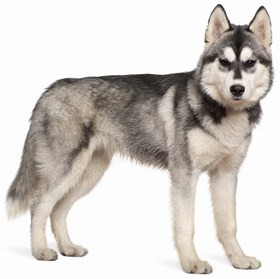 Siberian Husky |  Akita | 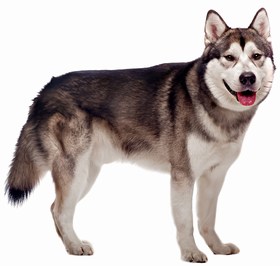 Alaskan Malamute | 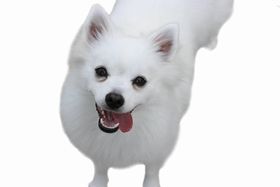 American Eskimo Dog |


